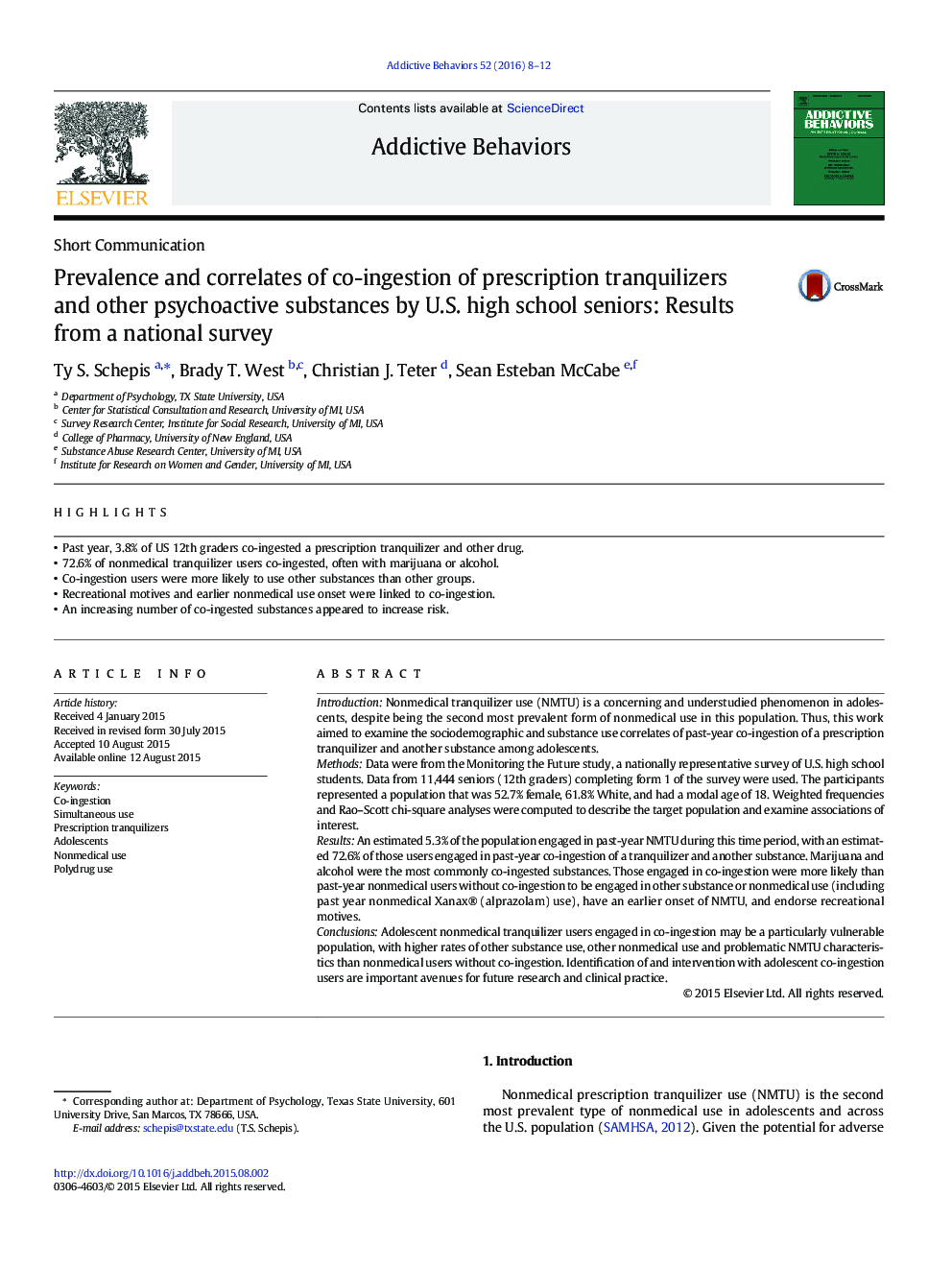| کد مقاله | کد نشریه | سال انتشار | مقاله انگلیسی | نسخه تمام متن |
|---|---|---|---|---|
| 898624 | 1472519 | 2016 | 5 صفحه PDF | دانلود رایگان |
• Past year, 3.8% of US 12th graders co-ingested a prescription tranquilizer and other drug.
• 72.6% of nonmedical tranquilizer users co-ingested, often with marijuana or alcohol.
• Co-ingestion users were more likely to use other substances than other groups.
• Recreational motives and earlier nonmedical use onset were linked to co-ingestion.
• An increasing number of co-ingested substances appeared to increase risk.
IntroductionNonmedical tranquilizer use (NMTU) is a concerning and understudied phenomenon in adolescents, despite being the second most prevalent form of nonmedical use in this population. Thus, this work aimed to examine the sociodemographic and substance use correlates of past-year co-ingestion of a prescription tranquilizer and another substance among adolescents.MethodsData were from the Monitoring the Future study, a nationally representative survey of U.S. high school students. Data from 11,444 seniors (12th graders) completing form 1 of the survey were used. The participants represented a population that was 52.7% female, 61.8% White, and had a modal age of 18. Weighted frequencies and Rao–Scott chi-square analyses were computed to describe the target population and examine associations of interest.ResultsAn estimated 5.3% of the population engaged in past-year NMTU during this time period, with an estimated 72.6% of those users engaged in past-year co-ingestion of a tranquilizer and another substance. Marijuana and alcohol were the most commonly co-ingested substances. Those engaged in co-ingestion were more likely than past-year nonmedical users without co-ingestion to be engaged in other substance or nonmedical use (including past year nonmedical Xanax® (alprazolam) use), have an earlier onset of NMTU, and endorse recreational motives.ConclusionsAdolescent nonmedical tranquilizer users engaged in co-ingestion may be a particularly vulnerable population, with higher rates of other substance use, other nonmedical use and problematic NMTU characteristics than nonmedical users without co-ingestion. Identification of and intervention with adolescent co-ingestion users are important avenues for future research and clinical practice.
Journal: Addictive Behaviors - Volume 52, January 2016, Pages 8–12
